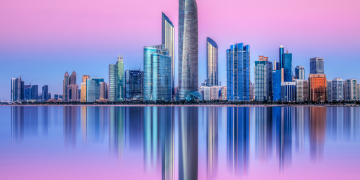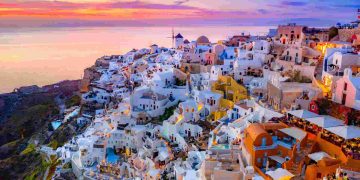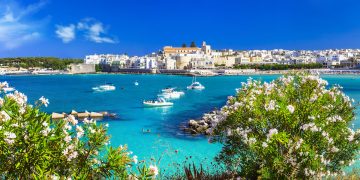Tokyo, Japan’s capital, is a city that feels like a collision of worlds, where the future meets the past in the most unexpected ways. Known for its towering skyscrapers, neon-lit streets, and cutting-edge technology, Tokyo is often regarded as one of the world’s most modern cities. However, amidst the buzz of urban life, it preserves an undeniable sense of history and tradition, with ancient temples and shrines standing proudly in the shadows of its glass-and-steel giants.
This juxtaposition of old and new is one of the defining features of Tokyo, offering travelers a unique experience that blends futuristic innovation with a deep cultural heritage. In this article, we will explore how Tokyo’s skyscrapers and shrines come together to create a city where both the past and the future are celebrated side by side, and where the modern world coexists with ancient traditions in perfect harmony.
Introduction: How Tokyo Blends Ancient Traditions with Futuristic Modernity
Tokyo’s rapid transformation from a small fishing village into one of the world’s most dynamic and advanced cities is a story of resilience and reinvention. The city has undergone incredible changes over the centuries, especially after the Meiji Restoration in the 19th century, when Japan began to open up to the outside world and modernize its economy and infrastructure.
Today, Tokyo stands as a global hub for technology, finance, and innovation. Its skyline, punctuated by futuristic skyscrapers, is a testament to its success in embracing modernization. However, what sets Tokyo apart from other global cities is its ability to preserve its cultural roots while pushing the boundaries of innovation. The city is home to centuries-old shrines, tranquil gardens, and ancient temples that sit in close proximity to the world’s tallest buildings, busy shopping districts, and high-tech hubs.
This balance between the old and new gives Tokyo a unique sense of place. As a visitor, you can easily move from a bustling, high-tech shopping center to a quiet temple garden, or from a sleek, modern skyscraper to a traditional shrine with centuries of history. The city’s cultural landscape is rich with contrasts, and it is this very fusion that makes Tokyo so alluring to travelers seeking both excitement and serenity.
Skyscrapers and Innovation: Tokyo’s Cutting-Edge Architecture and Urban Development
Tokyo is a city known for its constant reinvention. As one of the most technologically advanced cities in the world, its architecture reflects the innovative spirit that drives the country forward. The skyline is dotted with sleek skyscrapers, each one a marvel of design and engineering, showcasing the city’s ability to blend form and function.
A Symbol of Modern Tokyo
One of the most recognizable symbols of Tokyo’s modernity is the Tokyo Skytree, the tallest structure in Japan and the second tallest in the world. Standing at 634 meters, the Skytree is not just a broadcasting tower—it’s an iconic symbol of Japan’s cutting-edge engineering and design. The tower offers stunning views of the city and, on clear days, even Mount Fuji. The design of the Skytree draws from Japan’s traditional architectural elements, such as the pagoda, while incorporating modern materials and technology. Its sweeping, futuristic design serves as a reminder of Tokyo’s dedication to innovation and progress.
The Marunouchi and Shinjuku Districts
Tokyo’s Marunouchi District, home to some of the city’s most prestigious office buildings and hotels, is another example of its modern architecture. The district houses towering skyscrapers, such as the Marunouchi Building and the Tokyo International Forum, both renowned for their sleek, minimalist designs and cutting-edge technology. These buildings, with their glass facades and clean lines, stand in stark contrast to the more traditional architecture found elsewhere in the city, yet they feel perfectly at home in Tokyo’s fast-paced environment.
Another area where modern architecture thrives is Shinjuku, Tokyo’s bustling entertainment and business hub. The skyscrapers in Shinjuku, such as the Tokyo Metropolitan Government Building, are not only functional but also visually stunning. Designed by renowned architect Kenzo Tange, the Tokyo Metropolitan Government Building is one of the most striking structures in the city, with its futuristic twin towers and geometric design. The district is a vibrant mix of office buildings, shopping malls, restaurants, and entertainment venues, offering visitors a glimpse into the energy and innovation that defines Tokyo’s urban landscape.
Sustainable and Green Buildings
Tokyo also leads the way in sustainable urban development. Many of the city’s new buildings are designed with eco-friendly features, such as solar panels, green roofs, and energy-efficient materials. Roppongi Hills, one of the largest urban development projects in Japan, exemplifies this commitment to sustainability. The complex includes office buildings, residential apartments, shopping malls, and even a museum—all designed with a focus on environmental sustainability.

Temples and Shrines: Preserving Japan’s Spiritual and Cultural Heritage Amidst the Bustle
Despite Tokyo’s bustling, futuristic atmosphere, the city remains deeply rooted in its traditional practices, particularly those tied to Shintoism and Buddhism. Tokyo is home to numerous temples and shrines, some of which date back centuries. These sacred spaces provide a tranquil escape from the frenetic pace of city life, offering visitors a chance to connect with the country’s spiritual heritage.
Senso-ji Temple: The Heart of Tokyo’s Spirituality
One of the most famous temples in Tokyo is Senso-ji, located in the historic Asakusa district. As Tokyo’s oldest and most visited Buddhist temple, Senso-ji holds a special place in the hearts of both locals and tourists alike. The temple is dedicated to Kannon, the goddess of mercy, and is believed to have been founded in the 7th century. Visitors are drawn to the temple’s magnificent Kaminarimon Gate, a massive red lantern that serves as the entrance to the temple grounds. Once inside, the temple’s peaceful atmosphere contrasts sharply with the hustle and bustle of Asakusa, where tourists can shop for souvenirs along the Nakamise Shopping Street.
Senso-ji is more than just a tourist attraction—it’s a place of reverence and reflection. Visitors can participate in traditional rituals, such as purifying themselves with incense or purchasing charms and amulets for good luck. The temple is a spiritual sanctuary amidst the chaos of the modern city, offering a rare glimpse into Tokyo’s rich cultural and religious heritage.
Meiji Shrine: A Sacred Space in the Heart of the City
Another important spiritual site is the Meiji Shrine, located in the serene Yoyogi Park. Dedicated to Emperor Meiji and Empress Shoken, the shrine is an important symbol of Japan’s transition from the Edo period to the Meiji era, when the country opened its doors to the West. The Meiji Shrine is known for its beautiful forested grounds, where visitors can stroll along shaded pathways lined with towering trees. The shrine’s elegant wooden torii gate marks the entrance to this sacred space, and inside, visitors can witness traditional Shinto ceremonies and rituals.
The Meiji Shrine offers a peaceful retreat from the city’s frenetic pace, allowing visitors to experience Japan’s ancient spiritual practices in an environment of tranquility and beauty. It’s a place where you can reflect, pray, and gain insight into the spiritual traditions that have shaped Japan for centuries.
Shrines and Temples in Harmony with Nature
Tokyo’s shrines and temples are not just cultural artifacts—they are also deeply intertwined with nature. Many of the city’s sacred sites are located within lush gardens and parks, creating an atmosphere of harmony between the natural world and human creativity. The Nezu Shrine, known for its beautiful azalea gardens, and the Togo Shrine, surrounded by peaceful greenery, are prime examples of how Tokyo’s religious sites are designed to foster a connection with nature.
Where to Go: Top Spots in Tokyo That Embody Both Tradition and Innovation
Tokyo is full of places that embody the perfect balance of old and new. Here are some of the best spots in the city where visitors can experience this unique fusion of tradition and modernity:
- Asakusa and Senso-ji Temple: Asakusa offers a perfect juxtaposition of the ancient and the modern. Explore the vibrant shopping street leading to Senso-ji, where you can experience both traditional crafts and modern Tokyo culture.
- Shibuya Crossing and Hachiko Statue: The famous Shibuya Crossing is the epitome of Tokyo’s bustling urban life. Nearby, the Hachiko Statue, honoring the loyal Akita dog, offers a touching glimpse into Japan’s deep cultural values and respect for tradition.
- Odaiba: This futuristic island district in Tokyo Bay is home to massive shopping malls, entertainment complexes, and the giant Gundam statue. It’s a perfect example of how Tokyo embraces both modernity and pop culture, creating a lively and cutting-edge environment.
- The Imperial Palace and East Gardens: The Imperial Palace, home to the Japanese Imperial Family, offers a serene escape from the urban jungle. The East Gardens, with their traditional Japanese landscaping, contrast beautifully with the city’s skyline.
Conclusion
Tokyo’s ability to balance the old with the new is what makes it one of the most captivating cities in the world. Its towering skyscrapers and cutting-edge architecture showcase the city’s embrace of innovation, while its ancient temples and shrines offer a peaceful reminder of Japan’s rich spiritual and cultural heritage. Together, they create a city that is constantly evolving, yet firmly rooted in its traditions—a city that never stops surprising, inspiring, and inviting travelers from around the world.





















